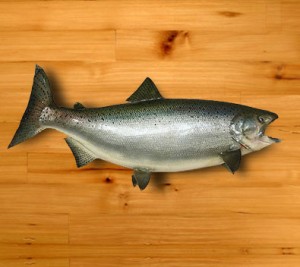It’s easy to think that the larger an animal is, the more challenging it’s going to be to mount. However, with taxidermy, it’s often the smallest animals that pose the biggest challenge. For example, taxidermy fish require much more skill, patience, and expertise than they seem like they would at first glance.
The hide of each preserved animal has its own considerations that need to be taken into account. Most mammal hides are relatively easy to preserve, however the different structure and constitution of fish, lizard, and bird skins requires different solutions to treat and preserve properly. For this, this generally consists of borax, or a paste available in fish taxidermy kits. After the fish is opened up and the bones, meat, and organs are removed, the skin must be treated with this solution or paste to keep it from decaying. Since the skin is cut away from the flesh in such a way that the head and tail remain intact, the eyes and brain will also have to be removed.
 After that, some taxidermists use special preservation solutions to treat the head and tail, while others soak the whole skin in a borax solution, or rub the inside with a borax paste. Treating and drying the skin will cause some loss of color in the scales, so having references available for what the fish looked like in life will be an enormous help after the process is complete.
After that, some taxidermists use special preservation solutions to treat the head and tail, while others soak the whole skin in a borax solution, or rub the inside with a borax paste. Treating and drying the skin will cause some loss of color in the scales, so having references available for what the fish looked like in life will be an enormous help after the process is complete.
After the skin is treated, the inside is powdered with extra borax. At this point, most taxidermists either begin packing the fish with sawdust, or stretch the skin over a polyurethane mannequin. Either method is a matter of personal preference. Once the fish is properly mounted, it must be allowed to air-dry in an area where it will receive adequate air circulation, and no moldy spots will be able to develop. The combination of treating the skin and allowing it to dry will cause the color to fade at this point, but, once the mount is thoroughly dry, oil paints or special airbrushing kits can be used to go back and add lifelike color to the scales. This is why having a good reference (either a guidebook to that species of fish, or photos or video taken of the fish during life, or very shortly after death) is crucial, since sloppy paint application will ruin the natural look and aesthetic effect of an otherwise well-done mounted animal.
Though fish taxidermy can take a bit more time and care than other forms of the art, the results are well worth it. Taxidermy fish make stunning décor pieces, particularly when in the hands of a patient, skillful painter that can accurately render all of the details of a living fish.
